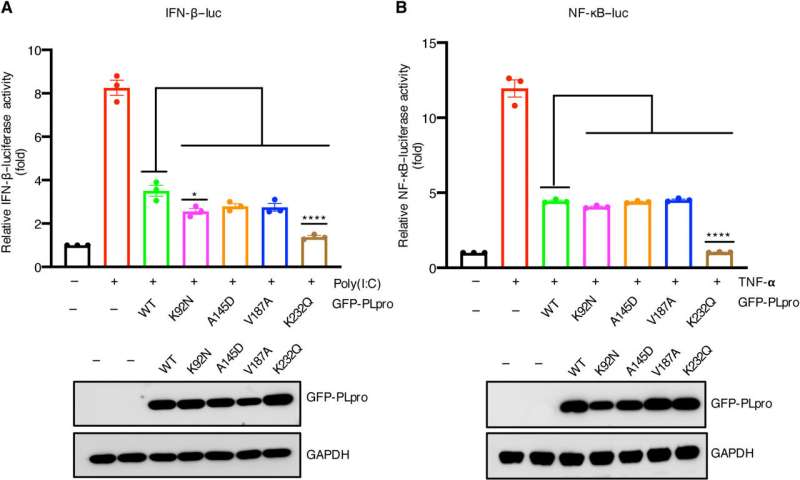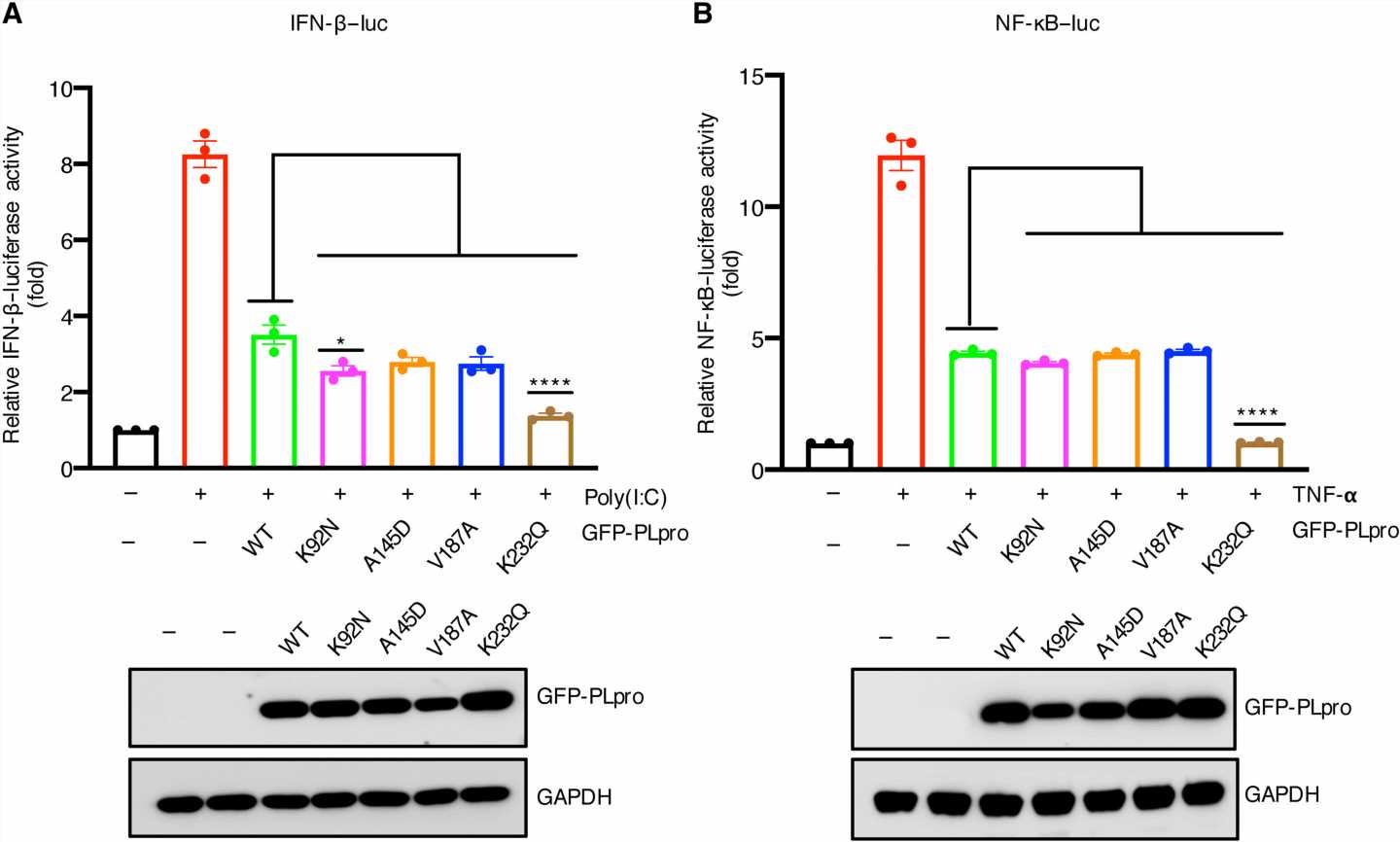
The entire family of coronaviruses is equipped with multiple methods of evading the human immune system, and two new studies have taken a deep dive into how these viruses, including SARS-CoV-2, leverage highly specialized enzymes that keep human immune forces at bay.
The studies train a bright spotlight on the stealthy strategies that coronaviruses deploy to antagonize and destabilize human cells, steps scripted in their genetic code that ultimately help these viruses evade immune system assault. Some members of the broad coronavirus family are more adept at these strategies than others.
Indeed, one of the constants throughout the COVID pandemic has been the worrying discovery of a growing suite of molecular methods that SARS-CoV-2 uses to elude the human immune system. New research from China has opened a window into an evasion strategy in which coronaviruses destabilizes human cells and damages leap forward by comparing the evasion capabilities of milder coronaviruses to the trio of coronaviruses known to cause serious, even lethal respiratory infections.
“Coronaviruses that infect humans can cause either common colds … or severe respiratory symptoms,” noted Yuxian Xiong, lead author of one of the two studies reported in Science Signaling. Both research papers involve roughly the same team of scientists from numerous institutions in China, including State Key Laboratory of Chemical Oncogenomics in Guangdong and Peking University Shenzhen Graduate School, also in Guangdong.
Regardless of whether the coronavirus causes a bout with the common cold or serious infections, such as COVID-19 or MERS, most set the stage for immune evasion by damaging critical human proteins that prompt the immune response. Coronaviruses launch their attack by deploying the same type of protein-cleaving enzyme.
Xiong explained that there are seven coronaviruses that infect humans, and four cause the common cold. They are: HCoV-NL63, HCoV-229E, HCoV-HKU1 and HCoV-OC43. Their more dangerous cousins are SARS-CoV, the culprit behind the 2003 SARS epidemic; MERS-CoV, which emerged in Saudi Arabia in 2012, and, of course, SARS-CoV-2, the virus underlying the COVID-19 pandemic.
The Guangdong team zeroed in on the viral enzymes known as papain-like proteases, protein-cleaving enzymes that evolved to help coronaviruses ensure their survival by damaging critical signaling proteins that regulate human cells. Once attacked by these enzymes, human cells become destabilized and lose their capacity to marshal innate immune system responses.
While these enzymes have been elucidated in the trio of dangerous coronaviruses, Xiong and colleagues have identified protein-like proteases—PLPs—in HCoV-229E, HCoV-HKU1, and HCoV-OC43, three coronaviruses that cause the common cold.
“We identified the PLPs of HCoV-229E, HCoV-HKU1, and HCoV-OC43 and found that their enzymatic properties correlated with their ability to suppress innate immune responses,” wrote Xiong. The innate immune response is the initial cascade of immune system constituents released by human cells in response to infection.
Xiong and colleagues describe how coronaviruses use their PLPs to damage the protein ubiqutin and a related ubiquitin-like protein called ISG15. Human cells use ubiquitin and ISG15 as cell regulators. By damaging these regulating proteins, the innate immune response is impaired and the viruses are free to proliferate unchecked. PLPs are said to have deubiquitinating and deISGylating activity.
Deubiquitinating and deISGylating activity in coronaviruses play important roles in antagonizing the host’s immune system and additionally may promote immune evasion by coronaviruses, Xiong and colleagues say.
Dan Cao and a team of scientists in a second study published in the same journal investigated how the SARS-CoV-2’s PLP—Plpro—suppresses the type-1 interferon antiviral response in human cells. Interferon is a critical player in innate immune system activity.
Cao found that, when infecting human embryonic kidney cells, Plpro removed chains of ubiquitin proteins (in other words, PLpro deubiquitinated those proteins) from a multiprotein complex in human cells called STING, which stands for Stimulator of Interferon Genes. STING is a 379 amino acid complex and is a major propagator of antiviral responses.
Looked at another way, Cao and colleagues discovered how SARS-CoV-2 literally takes the sting out of the STING complex. “Because it is the first line of antiviral defense in humans, the type 1 interferon signaling pathway is one of the main targets of viral antagonism to facilitate immune evasion,” Cao asserted in the second Science Signaling study on PLPs and their capacity to elude human immune system activity. “Several SARS-CoV-2 proteins reportedly play antagonistic and evasion roles against interferon-1 responses.”
Cao and the Guangdong team of researchers additionally found that treating human lung airway cells with an activator of STING, and a compound that inhibits PLpro, slowed the replication of SARS-CoV-2 in culture. The researchers also examined the PLPs from the six other coronaviruses that infect humans as well as several SARS-CoV-2 variants of concern. They discovered that PLPs from all coronaviruses that infect humans became bound to STING and suppressed interferon responses.
The discoveries are leading to new insights about the family of human-infecting coronaviruses as a whole. “SARS-CoV-2, SARS-CoV, and MERS encode only one PLP domain, namely, PLpro,” Xiong explained, referring to the trio of more dangerous types of coronaviruses. “By contrast, the mild coronavirus NL63 contains two PLP domains, PLP1 and PLP2, but only PLP2 has been reported to have deubiquitinating activity.”
Having these new discoveries in hand may eventually lead to improved antiviral therapies for existing coronaviruses and even future threats from this family of pathogens, Xiong and Cao say.
More information:
Yuxian Xiong et al, The substrate selectivity of papain-like proteases from human-infecting coronaviruses correlates with innate immune suppression, Science Signaling (2023). DOI: 10.1126/scisignal.ade1985
Dan Cao et al, The SARS-CoV-2 papain-like protease suppresses type I interferon responses by deubiquitinating STING, Science Signaling (2023). DOI: 10.1126/scisignal.add0082
Journal information:
Science Signaling
Source: Read Full Article
